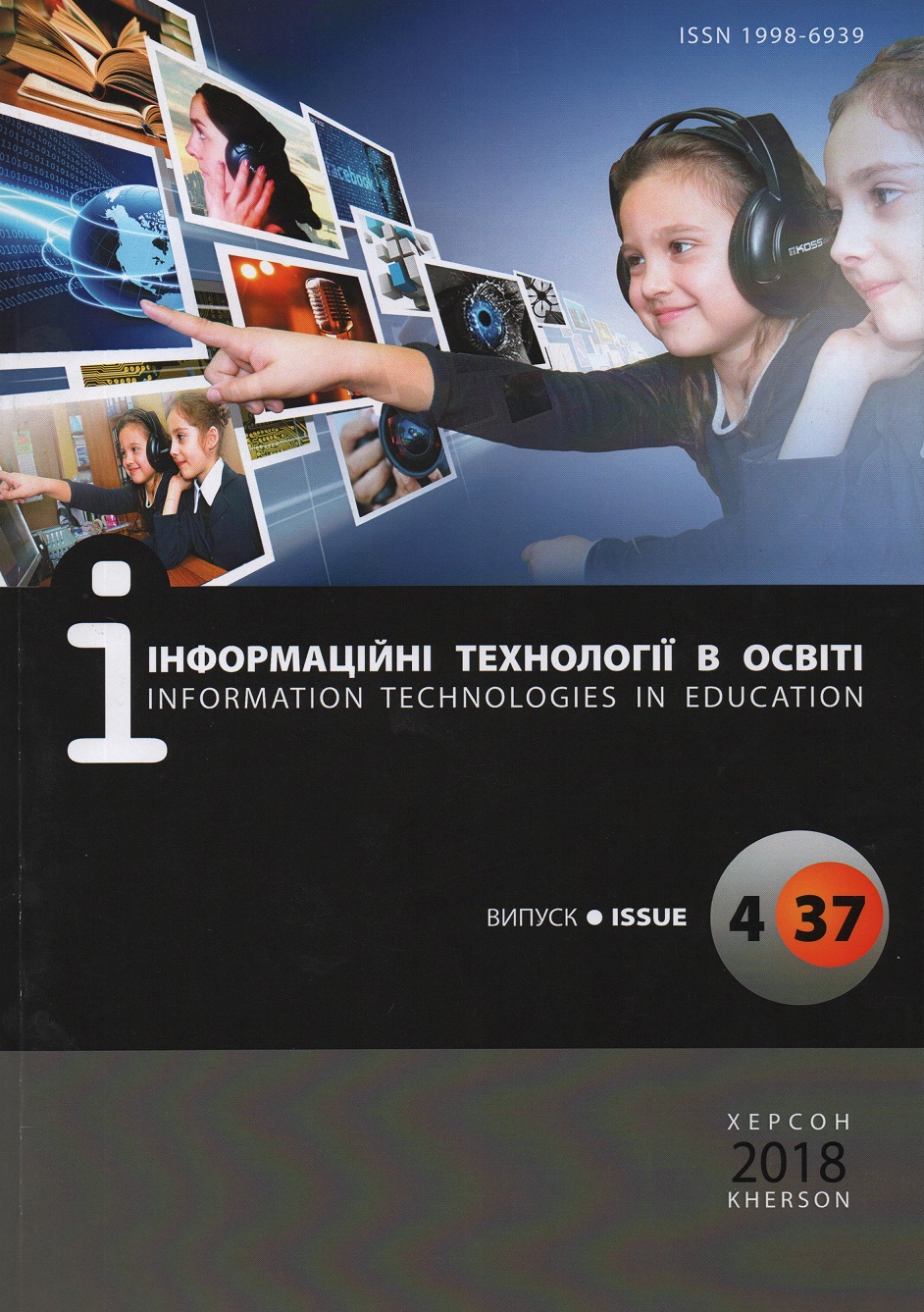STRUCTURE OF PROFESSIONAL ENGLISH TRAINING OF FUTURE SHIP ENGINEERS
DOI:
https://doi.org/10.14308/ite000685Keywords:
communicative competence, communicative-competence approach, blended learning, MOODLEAbstract
The role of the maritime higher educational establishments is to prepare a future competent marine specialist employee in such a way that he meets the requirements of the employer and is able to provide a qualitative professional activity on board. Therefore, one of the key tasks of the training of the ship's engineers is the formation of his communicative competence. Our research was aimed at describing the professional appointment of the future ship engineer; list of means of training; formation of a subject of professional activity; description of production functions; outline of his learning environment, and a list of conditions for successful professional training. As a result of our study, it has been proved that future ship engineers use modern training tools or online teaching materials for the study of marine machinery, mechanisms and equipment in the marine maritime higher educational establishment and informational and communicative pedagogical environment. The production functions are defined by the Code of the STCW (Code for the Training, Certification and Watchkeeping for Seafarers). The use of the communicative competence approach and the e-courses in LMS MOODLE has a potential educational opportunity as an effective means for forming the foreign professional competence of future seafarers.
Combined study, the combination of the EOOD with the MOODLE platform has a potential educational opportunity as an effective means for shaping the foreign professional competence of future ship engineers. Prospects for the further study of LMS MOODLE, we wish to further study the foreign experience of using mixed learning in order to disseminate and improve modern English language teaching technologies in marine higher education institutions.
Downloads
Metrics
References
1. Brian, K., Williams, S., Sawyer, S. & Hutchinson, E. (2010). Using information technology: a practical introduction to computer and communications. Boston: McGraw-Hill.
2. Brown, J. D. (1996). Testing in Language Programs. Upper Saddle River. NJ: Prentice Hall Regents.
3. Grabe & Grabe. (2005). Integrating technology for meaningful learning. USA: Houghton Mifflin.
4. Сakir, İ. (2006). The use of video as an audio-visual material in foreign language teaching classroom. The Turkish Online Journal of Educational Technology, 5 (4). ISSN: 1303 6521.
5. Flecknoe, M. (2002). How can ICT help us to improve education? Innovations in education and teaching international, 39(4), 271-279.
6. International Maritime Organization (2000). Model Course 3.12. Assessment, Examination and Certification of Seafarers. London: IMO Publishing.
7. International Maritime Organization (2015). Model Course 3.17. Maritime English. London: IMO Publishing.
8. Rensulli, J.S. & Sternberg, R.L.(Ed.) (2016). The Three-ring conception of giftedness. A developmental model for creative productivity. New York: Cambridge University Press.
9. International Maritime Organization (2001). STCW: a guide for seafarers. International transport workers’ federation. Retrieved from http://www.imo.org/en/Publications.
</uk>
<en>
1. Brian, K., Williams, S., Sawyer, S. & Hutchinson, E. (2010). Using information technology: a practical introduction to computer and communications. Boston: McGraw-Hill.
2. Brown, J. D. (1996). Testing in Language Programs. Upper Saddle River. NJ: Prentice Hall Regents.
3. Grabe & Grabe. (2005). Integrating technology for meaningful learning. USA: Houghton Mifflin.
4. Сakir, İ. (2006). The use of video as an audio-visual material in foreign language teaching classroom. The Turkish Online Journal of Educational Technology, 5 (4). ISSN: 1303 6521.
5. Flecknoe, M. (2002). How can ICT help us to improve education? Innovations in education and teaching international, 39(4), 271-279.
6. International Maritime Organization (2000). Model Course 3.12. Assessment, Examination and Certification of Seafarers. London: IMO Publishing.
7. International Maritime Organization (2015). Model Course 3.17. Maritime English. London: IMO Publishing.
8. Rensulli, J.S. & Sternberg, R.L.(Ed.) (2016). The Three-ring conception of giftedness. A developmental model for creative productivity. New York: Cambridge University Press.
9. International Maritime Organization (2001). STCW: a guide for seafarers. International transport workers’ federation. Retrieved from http://www.imo.org/en/Publications.
</en>
Downloads
Published
How to Cite
Issue
Section
License
This work is licensed under a Creative Commons Attribution-NonCommercial-ShareAlike 4.0 International License.






























